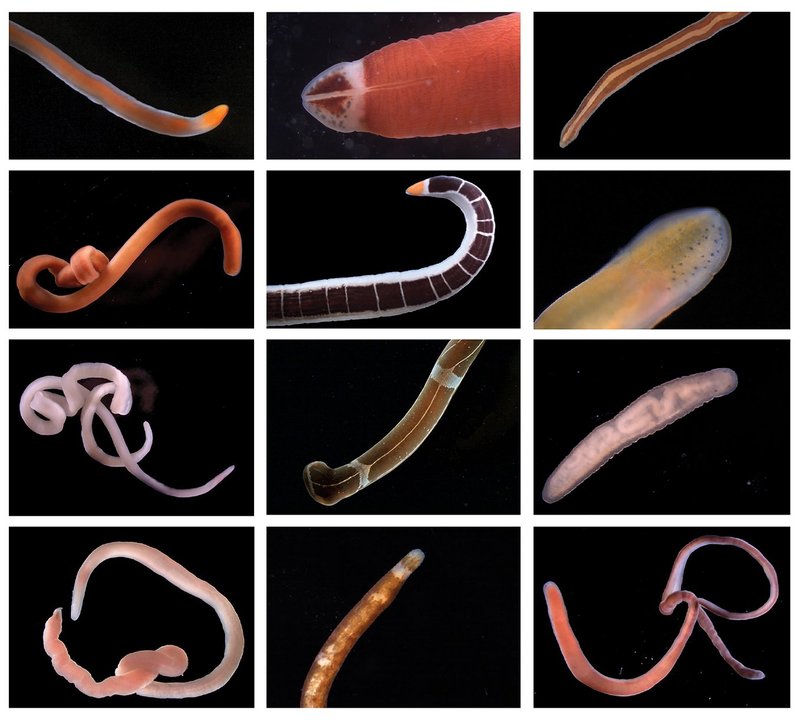
Imagine, for a moment, standing on a beach, staring out at the waves. The ocean is teeming with life, and hidden among the sand and seaweed are these slender, colorful beings. Some can be bright red, while others might be electric blue or a soft pastel. Just like a painter has a palette, nature has given ribbon worms a stunning range of colors, each serving its purpose. These vibrant hues can indicate a worm’s habitat, diet, or even its defense mechanisms. Intrigued? Let’s dive deeper into the colorful world of ribbon worms and explore why they sport such diverse colors across different species.
What Are Ribbon Worms?
Ribbon worms are long, slender creatures that can stretch up to 30 meters, depending on the species. They’re soft-bodied and primarily inhabit marine environments, though a few species can be found in freshwater. One of the most fascinating features of ribbon worms is their proboscis, a long, retractable organ they use to hunt prey. Imagine a superhero with a hidden weapon—when a ribbon worm spots its dinner, it sends out its proboscis like a lightning bolt, capturing fish and small invertebrates with incredible speed.
These worms are not just interesting for their feeding tactics. They also play a crucial role in their ecosystems. By breaking down organic material, ribbon worms contribute to nutrient cycling in marine environments. So, next time you spot a worm while exploring tide pools, remember that it’s not just a squirmy creature; it’s a vital player in its underwater world.
The Role of Color in Ribbon Worms
You might be wondering why ribbon worms come in such a wide range of colors. The truth is, color plays a significant role in their survival. Bright colors can serve as a warning sign. For instance, if a ribbon worm is brightly colored, it might signal to potential predators that it’s toxic or unappetizing. It’s like wearing a “don’t eat me” sign! Conversely, dull colors can help them blend into their surroundings, providing camouflage against predators.
In addition to survival, color can also indicate the worm’s habitat. For example, species that live in vibrant coral reefs often exhibit bright colors, while those inhabiting the muddy sea floor may be darker and more muted. This relationship between color and environment helps ribbon worms adapt and thrive in their specific niches.
Color Variations Across Species
Now, let’s explore some specific examples of color variations among ribbon worm species. Each species brings its unique flair to the table, demonstrating just how diverse these worms can be.
- Lineus longissimus: This species is often referred to as the “bootlace worm.” It can be a striking yellow or green, which helps it stand out in the rocky crevices where it resides.
- Cephalothrix simula: With its vibrant orange or red body, this species is a real eye-catcher. The bright coloration may help warn off potential predators.
- Amphiporus spp.: Some species in this group are known for their beautiful, deep blue color, often found in shallow waters.
These variations are not just for show; they also serve important ecological functions. Each worm’s color is often tied to its behavior, diet, and environment, making it a fascinating aspect of their biology.
How Color Affects Behavior
You might be curious about how these stunning colors influence the behavior of ribbon worms. For one, a worm’s color can impact its predatory techniques. Brightly colored species often use bold strategies to catch prey, while those with muted hues may rely on stealth and patience.
The pigment composition in ribbon worms also alters how they interact with their environment. Some colors may reflect UV light, which can help them regulate their body temperature or enhance their visibility to mates during breeding season. It’s interesting to think about how something as visible as color can have profound impacts on survival and reproduction.
Environmental Influences on Color Variations
Environmental factors like temperature, water quality, and habitat also play a big role in determining a ribbon worm’s hue. For instance, if a species is exposed to harsher conditions, it might evolve to develop a more vivid coloration as a warning system.
Moreover, the diet of these animals can affect their colors too. A ribbon worm that feeds on brightly colored prey might absorb some pigments and display those colors itself. It’s like how some flamingos turn pink from the shrimp they eat! So, the next time you admire a ribbon worm’s color, remember that various environmental factors have intertwined to create its unique appearance.
In summary, ribbon worms are much more than the unassuming creatures they might seem at first glance. The astonishing color variations in ribbon worms across different species reveal essential insights about their survival strategies, behavior, and ecological roles. Whether they’re flaunting bright, eye-catching hues or blending into the sea floor, each color tells a story about the life of these remarkable animals.
So, the next time you’re near the ocean, take a moment to appreciate the vibrant world beneath the waves. Ribbon worms may be small, but their colors shine like jewels in the vast, blue sea. It’s a beautiful reminder that there’s always more to discover, even in the most unexpected places.

